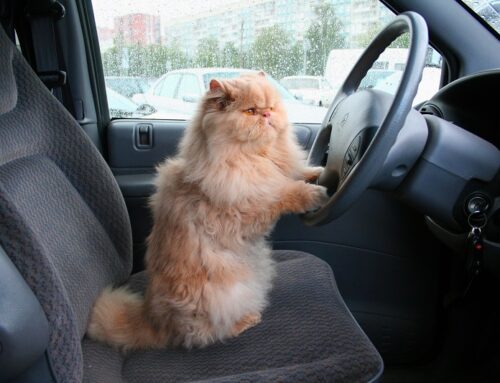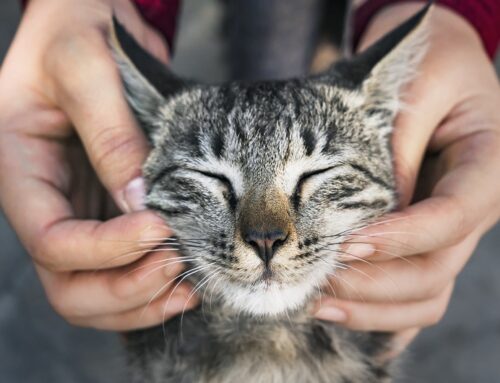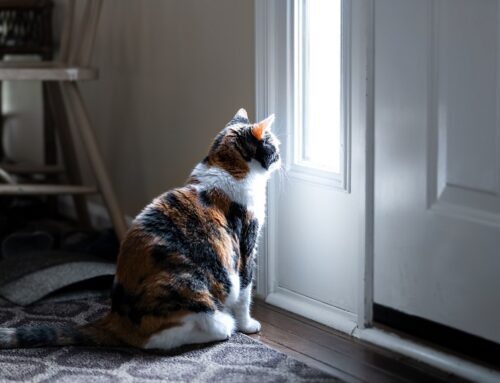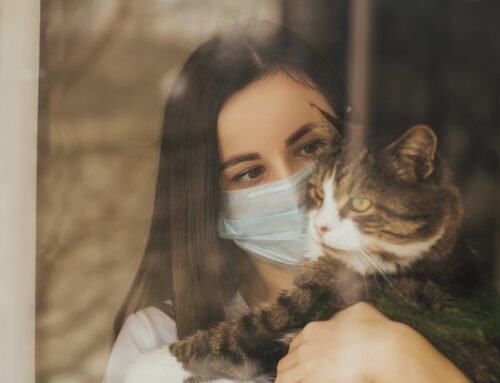I have placed more than a few feeding tubes over the years, and I frequently get asked: “Isn’t that just for cats in hospice?” The short answer is: “No.” So, I wanted to use this month’s newsletter to explain the use of feeding tubes.
Why would a cat need a feeding tube? The most obvious reason is that a cat physically cannot eat, usually due to facial trauma, such as a broken jaw that needs to be wired shut until it heals. In general, it is recommended to place a feeding tube any time a cat is not consuming enough calories to maintain its body weight. This can be for cats with a treatable illness or for cats in hospice care. The most common reason I have placed feeding tubes is for cats with fatty liver disease (hepatic lipidosis), as these cats may not eat on their own for several weeks.
As you can probably guess, it is critical for cats maintain adequate nutrition while ill. Being strict carnivores, cats have a unique metabolism compared to other animals–including dogs which are more omnivorous. Cats rely on a continuous supply of animal proteins for energy, nutrition and maintenance of blood sugar. If they are not consuming food on a regular basis, their bodies quickly resort to using their own muscle to maintain basic nutrition. Furthermore, cats do not keep stores of (or have the ability to synthesize) many key amino acids and vitamins; they must consume them daily. This means that a cat that is not eating well will quickly become deficient in essential vitamins and amino acids, lose weight and become debilitated.
Why not just use a syringe to feed a sick cat? Most cats that are debilitated do not want to eat, and syringe feeding (or “force feeding”) can quickly become messy, stressful, and frustrating for the cat and caregiver. Feeding tubes are very easy to use, and appropriate nutrition and medications can be quickly given with little or no stress to the cat or caregiver.
While there are a few different types of feeding tubes, the type I will discuss is for temporary long–term use (a few days to a few months). These feeding tubes are placed through the side of the neck and into the esophagus, delivering food directly to the stomach. They are placed fairly quickly under general anesthesia and can be left in place for several months, if needed. Cats are rarely bothered by the presence of the feeding tube and can go about their daily routine once they are feeling better. Cats can also eat on their own with the tube in place. Feeding tubes are removed once the cat is eating enough calories on their own to maintain a healthy weight. The only maintenance with the tube is performing a weekly bandage change to keep the skin entrance site clean.
Feeding tubes are just one of the tools in our arsenal to help cats get back on their feet when they are sick. They can be used in hospice care but are more frequently used as a treatment modality until cats are eating well on their own. They aren’t strictly “a last resort,” so if you (or a friend’s cat) is recommended to place a feeding tube, it does not necessarily mean that the situation is dire. Instead, it is to help prevent the situation from becoming dire!
Hope you found this article to be informative! Give us a call if you have any questions or concerns about your kitty’s health. See you next time! =^_^=








